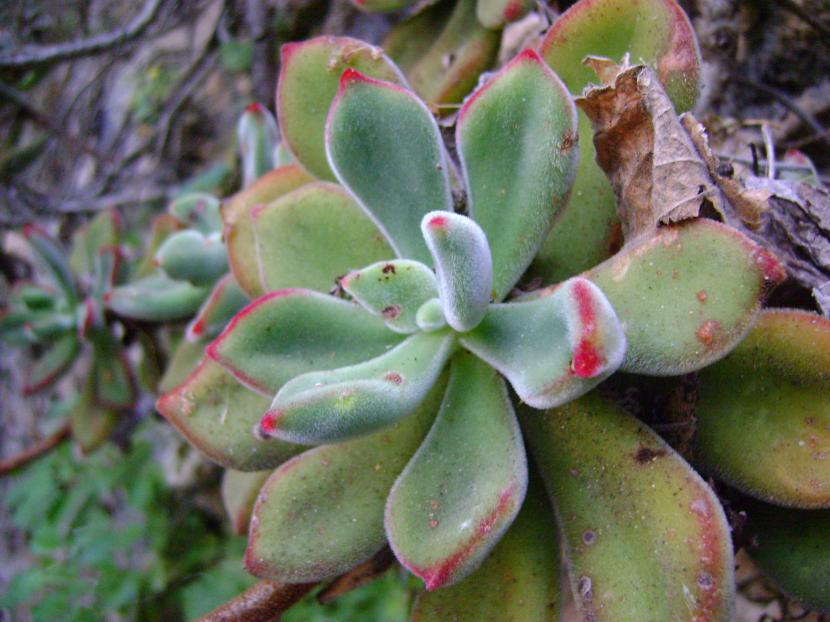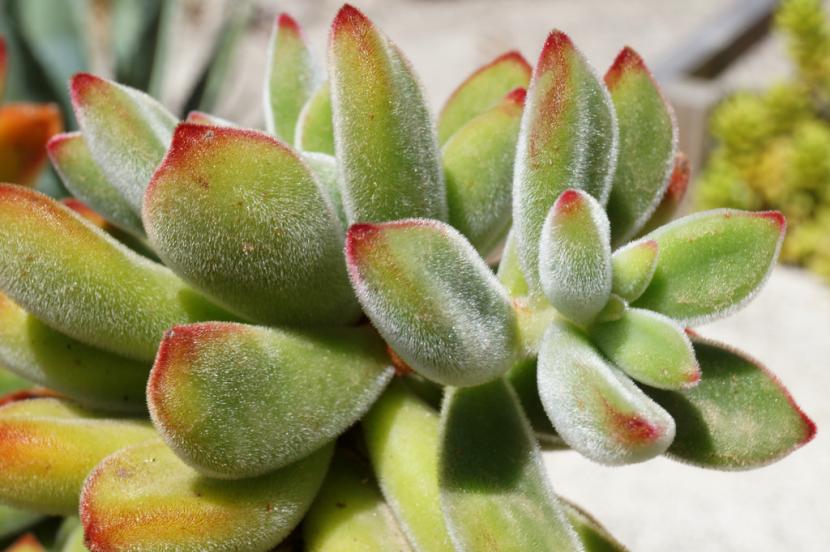
Succulents of the genus Echeveria are real wonders. Anyone would say they look like flowers that grow a few inches above ground level, right? However, they also have their own flowers. Small, no more than 1cm in diameter, but very pretty.
Among all of them, there is one that I would like to recommend especially: the Echeveria pulvinata. Why? Well, besides having the qualities of its sisters, that is, fast growth, easy reproduction by cuttings and low maintenance, its leaves are very ornamental. And that, without counting on the fact that you can find it in practically any nursery. Do you dare to have one?

La Echeveria pulvinata, also known as Echeveria peluda, belongs to the Crassulaceae family. It is originally from Oaxaca (Mexico). Its leaves are spatulate, pointed and covered by hairs that give it a velvety appearance. The flowers are small, less than 1cm in diameter, orange or red, and emerge from a flower stalk approximately 8cm long.
With a height of 30cm, it is a perfect plant to have in a pot, either outside or inside the home, or in the rockery along with other succulents.

The care that the Echeveria pulvinata they are very few, as we are going to see:
- Location: it can be in full sun if we want it to acquire reddish tones, or in semi-shade if we like it to stay green.
- Irrigation: once or twice a week in summer, and every 10-15 days the rest of the year. It is important to avoid wetting the leaves, as they could rot.
- Fertilizer: from spring to late summer, it is recommended to fertilize with any liquid organic fertilizer, following the instructions specified on the package.
- Transplant: it should be done once a year, in spring. For this we can use universal substrate mixed with 30% perlite or river sand.
- Pruning: It's not necesary. We will only remove the withered flowers.
- Plagues and diseases: Echeveria are hardy plants, but they can be harmed by fungi if watering is excessive.
- Rusticity: withstands light frosts down to -2ºC.

And if you also want to have more copies, you just have to cut the stems that you like the most in spring or summer, and plant them in a pot individual. In 2-3 weeks they will begin to root.
Did you know this beautiful plant? 🙂